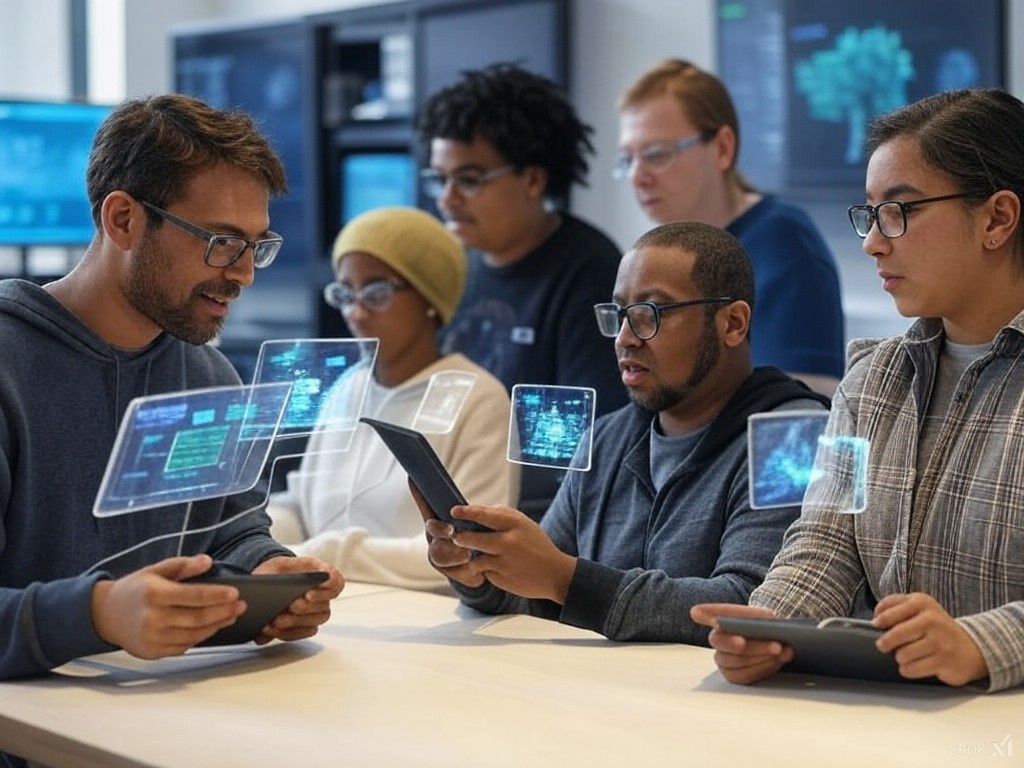Blog
Revolutionizing Accessibility: How Text-to-Speech Technology Empowers People with Disabilities

Revolutionizing Accessibility: How Text-to-Speech Technology Empowers People with Disabilities
Admin / January 24, 2025
In an increasingly digital world, accessibility is no longer a luxury—it’s a necessity. For millions of people with disabilities, technology acts as a bridge to overcome everyday challenges and access opportunities that were once out of reach. Among the most transformative innovations is text-to-speech (TTS) technology, a tool that converts written text into spoken words, opening up a world of possibilities for individuals with diverse needs. This article explores how TTS is revolutionizing accessibility, empowering people with disabilities to live more independent and fulfilling lives.
Breaking Barriers for the Visually Impaired
For individuals who are blind or have low vision, accessing written content can be a significant challenge. Braille, while invaluable, is not always widely available, and printed text remains inaccessible to many. TTS technology bridges this gap by enabling visually impaired users to listen to books, articles, emails, and web content with ease. Screen readers powered by TTS, such as JAWS (Job Access With Speech) and NVDA (NonVisual Desktop Access), provide an auditory interface to computers and smartphones, ensuring users can navigate the digital world independently.
Furthermore, TTS allows real-time access to information, whether it’s reading street signs, product labels, or menus via apps that integrate optical character recognition (OCR) with TTS functionality. This immediacy fosters greater autonomy and inclusion in everyday life.
Enhancing Communication for Individuals with Dyslexia and Learning Disabilities
Reading difficulties, such as dyslexia, can make traditional methods of learning and information consumption frustrating and time-consuming. TTS technology offers an alternative by reading text aloud, enabling individuals with dyslexia to process information more effectively. Hearing text spoken can help with comprehension, retention, and reducing the cognitive load associated with decoding written words.
Many educational tools now integrate TTS to support students with learning disabilities, providing them with personalized learning experiences. For instance, students can follow along with highlighted text while listening, improving their reading skills over time. TTS ensures that learning materials are accessible to all, fostering equal opportunities in education.
Empowering Individuals with Mobility Challenges
For people with mobility impairments, interacting with traditional devices like keyboards and touchscreens can be difficult or impossible. TTS technology, when combined with speech recognition tools, offers a hands-free solution. Users can dictate text, have it read back to them, and navigate digital interfaces through voice commands. This technology is invaluable for individuals with conditions such as cerebral palsy, spinal cord injuries, or muscular dystrophy.
By reducing the need for physical interaction with devices, TTS promotes independence and enhances productivity, whether in the workplace, at school, or in everyday life.
Creating Inclusive Experiences for the Aging Population
As the global population ages, more people face age-related challenges such as vision loss, hearing impairment, and cognitive decline. TTS technology provides an accessible way for older adults to stay connected with the world. It enables them to listen to the news, communicate via email, and even enjoy audiobooks and podcasts without straining their eyesight.
Moreover, TTS helps individuals with cognitive impairments by simplifying interactions with technology. Friendly and natural-sounding voices make digital tools more approachable, ensuring that older adults remain engaged and socially connected.
Advancing Accessibility Across Languages and Cultures
TTS technology is breaking down language barriers by providing multilingual support. People who are deaf or hard of hearing can benefit from TTS when paired with speech-to-text tools, allowing them to engage in conversations more easily. Additionally, non-native speakers can use TTS to improve their pronunciation and comprehension in new languages, fostering global communication and inclusion.
The Road Ahead: Innovations in TTS
The future of TTS holds exciting possibilities. Advancements in artificial intelligence and machine learning are creating voices that sound increasingly natural and expressive, enhancing user experiences. Customizable voices allow users to select tones and accents that resonate with them personally. Additionally, real-time language translation integrated with TTS is on the horizon, further expanding accessibility for a diverse range of users.
Conclusion
Text-to-speech technology is more than a convenience; it’s a transformative tool that empowers individuals with disabilities to overcome barriers and participate fully in society. From enhancing education and communication to fostering independence and inclusion, TTS is revolutionizing accessibility in countless ways. As technology continues to evolve, the potential for TTS to make the world more inclusive and equitable is boundless. By embracing these innovations, we can ensure that no one is left behind in the digital age.